Scientists constantly warn about the catastrophic effect of carbon dioxide (CO2) on global warming.
But another huge concern is methane, which is more than 28 times as potent as CO2 at trapping heat in the atmosphere.
The primary component of natural gas, methane is responsible for approximately a third of the warming we are experiencing today.
Now, a map has revealed the world’s top 10 methane emitting hotspots where emissions of the potent gas are spiralling out of control.
They include South Sudan’s natural Sudd wetlands, the Kuznetsk Basin in Russia and three coal fields in China.
Combined, these 10 sites emit a total of 28.8 million tonnes of methane per year, according to experts at the University of Bremen in Germany.
[Methane’s] rising concentration in the atmosphere contributes significantly to global warming,’ they warn in a new study.
‘Almost half of the global methane emissions originate from anthropogenic sources, which are dominated by fossil fuel exploitation, livestock, rice cultivation and landfills, whereas the natural emissions mainly originate from wetlands.’

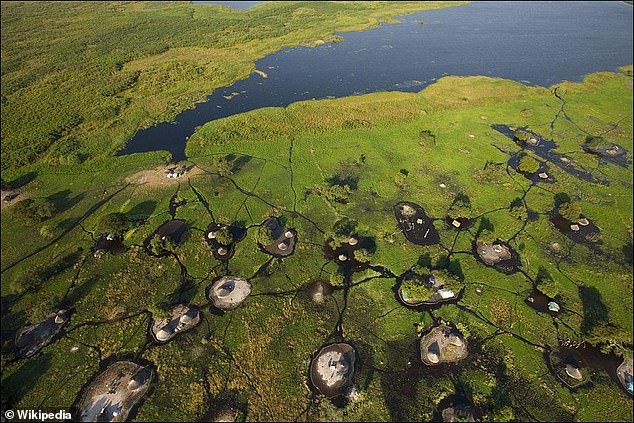
The new study measured methane emissions between 2018 and 2021 from hundreds of potential sources, based on data from the Sentinel-5P satellite.
Satellites detect methane by measuring the absorption of specific wavelengths of infrared light that are unique to methane molecules, acting like a ‘fingerprint’.
A location was classified as a ‘persistent emitter’ if levels of methane were consistently higher than the surrounding area.
Overall, the top methane emitting region was South Sudan’s natural Sudd wetlands, with emissions of 4.5 million tonnes per year.
Wetland habitats are filled with waterlogged soils and permafrost, which is what makes them sizable carbon sinks – meaning they store locked away CO2.
But as a warming climate causes wetland soils to warm or flood, the carbon is released into the atmosphere as methane.
The biggest anthropogenic (human-made) source, and the second-biggest overall, was from the oil and gas fields on the west coast of Turkmenistan.
This site emits 3.5 million tonnes of methane per year from oil and gas, which form a key part of Turkmenistan’s economy.
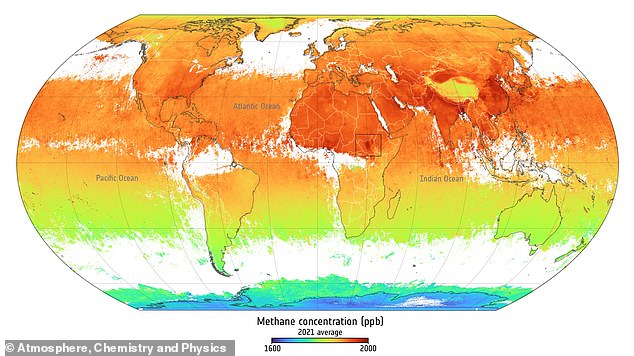
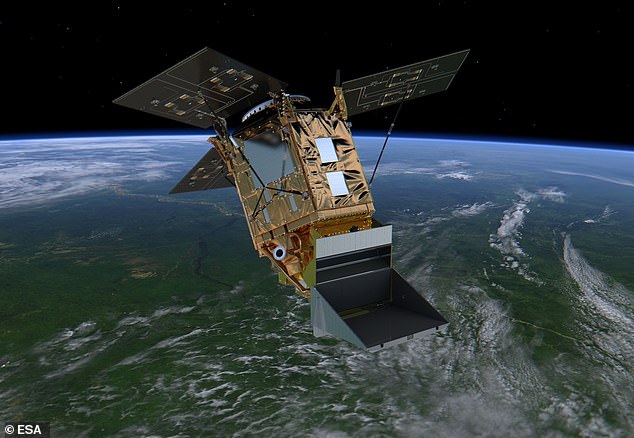
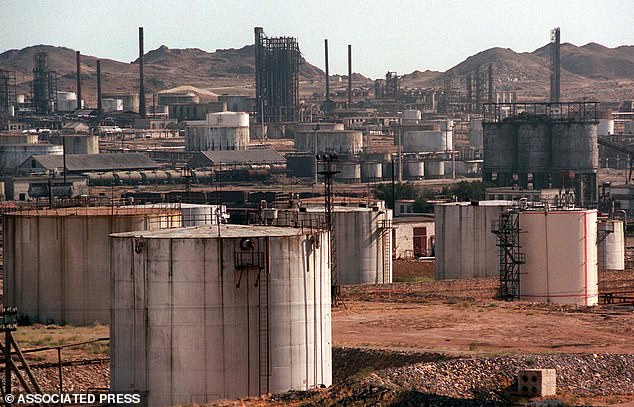
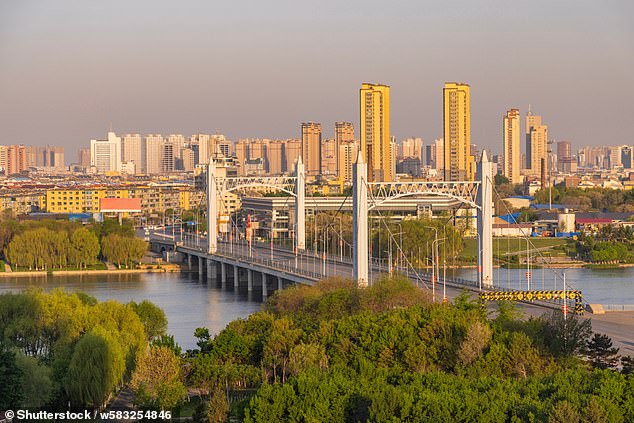
Third on the list is Ibera in Argentina with 3.3 million tonnes also from wetlands, followed by Liaoning in China with 3.3 million from ‘other anthropogenic sources’.
Other anthropogenic sources includes landfills, wastewater, digestive gas from ruminant animals such as cattle, sheep and goats, as well as manure, rice and energy buildings.
Next on the list are three coal fields in Shanxi province in China followed (Shanxi 1, 2 and 3), with emissions of 2.6 million, 2.6 million and 2.4 million, respectively.
Bangladesh’s capital Dhaka and Russia’s Kuznetsk Basin both account for 2.4 million – from ‘other anthropogenic sources’ and coal, respectively.
Rounding out the list was the Permian Basin, the US’s highest producing oil field, spanning the border between Texas and New Mexico, with 2.2 million.
Overall, the study identified 217 locations where methane is emitted – 7.8 per cent by coal, another 7.8 per cent by oil and gas, 30.4 per cent by other anthropogenic sources like landfills or agriculture, 7.3 per cent by wetlands, and 46.5 per cent by unknown sources.
The study, published in Atmosphere, Chemistry and Physics, focused solely on sources that emit methane gradually over time – on a continuous, ‘persistent’ basis.
‘The aim was not to identify specific events where methane is only released for a short period of time,’ said co-author Michael Buchwitz, senior scientist at the University of Bremen, Germany.
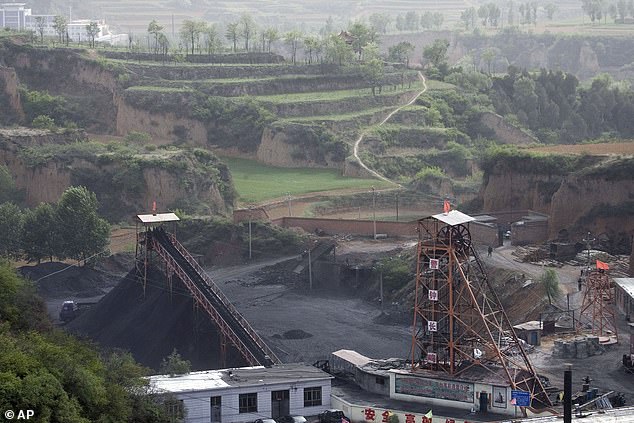
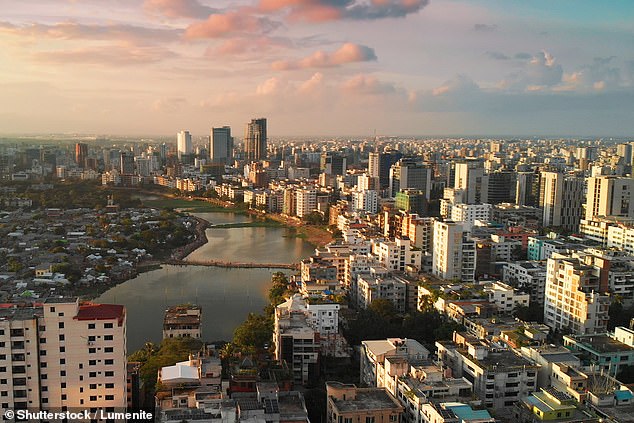

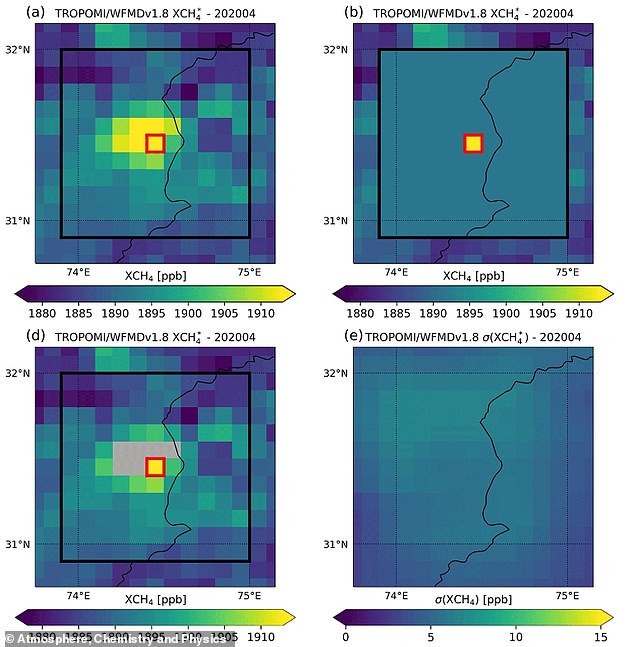
‘Instead, the aim was to identify sources that emit almost continuously during the four years that were analysed.
‘This includes natural sources such as wetlands, but also coal mining areas or large oil and gas fields.’
Methane has a more powerful warming effect than CO2, although it has a much shorter duration in the atmosphere before it decomposes.
Over a 20-year timescale, each kilogram of methane emitted has a global warming potential more than 80 times more potent than CO2.
Until 1850, methane levels were recorded at between 680 and 790 parts per billion, or ppb, according to data from NOAA Global Monitoring Laboratory.
But in the past decade, methane levels in Earth’s atmosphere have reached almost three times that to more than 1900 ppb.
‘A comparatively small number of highly emitting persistent methane sources are responsible for a large share of global methane emissions.
‘The identification and quantification of these sources, which often show large uncertainties regarding their emissions or locations, are important to support mitigating climate change.’

